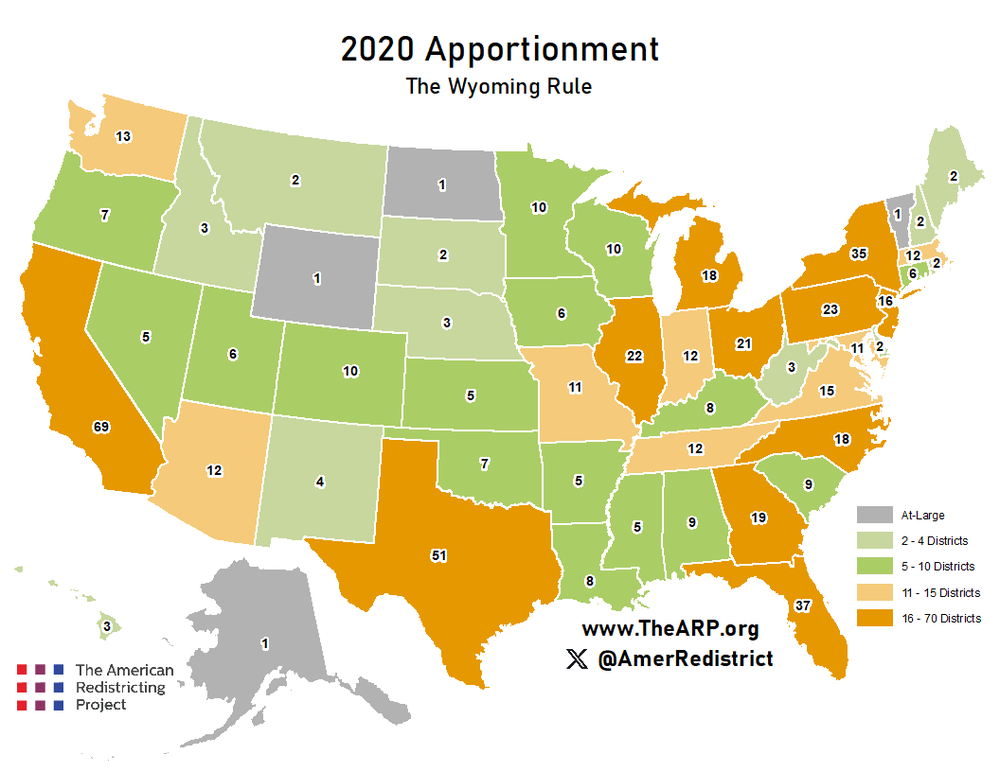Background
Many advocates for redistricting reform point to the size of the House of Representatives as one of the barriers to "fair maps" and inadequate representation. The average congressional district now has more than 750,000 residents. Some argue this makes it difficult for Members of Congress to adequately represent their constituents and also makes it easier for mapdrawers to gerrymander. Without getting into the merits of those arguments the American Redistricting Project will look into various proposals to "uncap the house". The U.S. House was capped at 435 members by the Permanent Apportionment Act of 1929 and only increased once (to 437 members) in 1959 to provide representation to the new states of Hawai`i and Alaska until the House could be reapportioned after the 1960 Census.
The Wyoming Rule
One of the more popular options to uncapping the House is known as the Wyoming Rule. The concept is straightforward. The total resident population of the United States should be divided by the total resident population of the smallest state to find the total number of seats in the House of Representatives. That number of seats is then apportioned.
In 2020, the Census Bureau found the total resident population of the United States stood at 331,449,281 while the total resident population of Wyoming (the smallest state) was 576,851. Applying the Wyoming Rule would yield a total House size of 574.58 seats. We will round up to 575 for purposes of this analysis. Utilizing the apportionment population (331,108,434 / 577,719) would allocate 573.13 seats.
The 2020 Apportionment Using the Wyoming Rule

America's two largest states would see double-digit gains under the Wyoming Rule
California: 52 -> 69 (+17)
Texas: 38 -> 51 (+13)
The next two largest states, Florida and New York, would each gain 9 seats.
Florida: 28 -> 37 (+9)
New York: 26 -> 35 (+9)
The rest of the top 10 also see significant increases.
Pennsylvania: 17 -> 23 (+6)
Illinois: 17 -> 22 (+5)
Ohio: 15 -> 21 (+5)
Georgia: 14 -> 19 (+5)
North Carolina: 14 -> 18 (+4)
Michigan: 13 -> 18 (+5)
Despite an increase of 140 seats four states would still have only one seat in the House.
Alaska, North Dakota, Vermont, and Wyoming
Electoral College Impact
A post-2020 apportionment using the Wyoming Rule would have made a negligible impact on the Electoral College.
Under the current apportionment, President Trump carried 31 states and with them 312 Electoral College Votes (57.993% of the Electoral College). Kamala Harris won 19 states and the District of Columbia for 226 ECVs (42.007%).
President Trump would have won 395 Electoral College Votes (58.26%) under a Wyoming Rule apportionment to Kamala Harris' 283 (41.74%).
